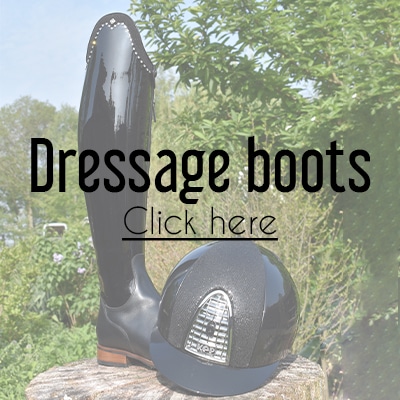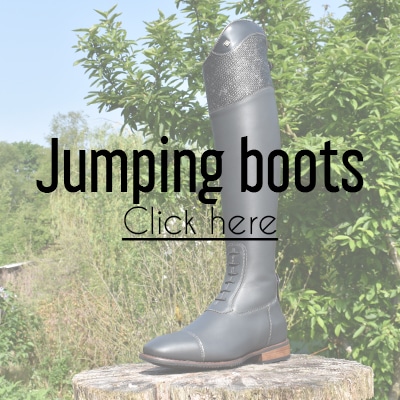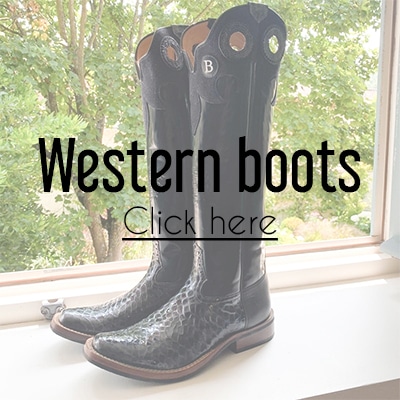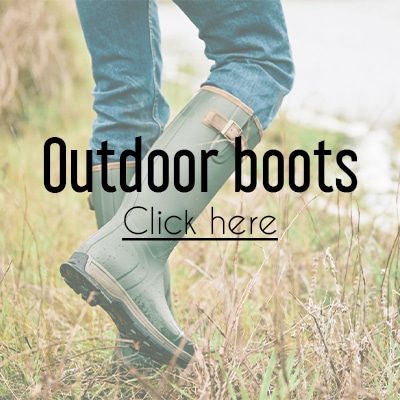Frequently asked questions about Long RidingBoots answered by MyRidingBoots.com
FAQ about long riding boots: Find answers to the most commonly asked questions about long riding boots. From fit and sizing to care and maintenance, we’ve got you covered. Learn about the different types of tall boots available and the features that set them apart. Discover how to properly measure for a perfect fit and get tips for keeping your boots in top condition. Whether you’re a beginner or experienced rider, our comprehensive guide has something for everyone.
Most frequently asked questions about long riding boots
What are the different types of long riding boots available?
Field boots: These are tall boots with a smooth, glossy finish that are typically worn for show jumping and dressage.
Paddock boots: These are shorter, more casual boots that are often worn for everyday riding or barn work.
Western riding boots: These boots have a pointed toe and a higher heel, and are typically worn for western riding disciplines such as roping and reining.
What are the key features to consider when choosing a pair of long riding boots?
Material: Riding boots are typically made from leather, synthetic materials, or a combination of both.
Fit: Riding boots should fit snugly, but not too tightly, and allow for some movement in the ankle.
Sole: Riding boots should have a non-slip sole that is suitable for the type of riding you do.
Zipper: Some riding boots have a zipper closure, which can be more convenient than laces.
Height: Riding boots come in different heights, so choose a height that is appropriate for your needs.
How should long riding boots fit?
Long riding boots should fit snugly, but not too tightly, around the foot and ankle. There should be enough room in the toe box to allow for some movement, but the heel should be held securely in place. The boots should also be comfortable to walk in, as riders often dismount and walk around in their boots. Click here to find your long boot size.
How do I care for and maintain my long riding boots?
Clean and condition the boots regularly to keep the leather soft and supple.
Use a boot jack or boot pull to remove the boots, as pulling on the boots can stretch or damage them.
Store the boots in a cool, dry place, away from direct sunlight or heat.
Avoid getting the boots wet, as moisture can damage the leather and cause the boots to shrink or stretch.
Repair any scuffs or scratches promptly to prevent further damage to the boots.
Can I wear my long riding boots for everyday use or are they only suitable for riding?
Some long riding boots can be worn for everyday use, especially if they have a more casual style such as paddock boots. However, it’s important to keep in mind that riding boots are designed specifically for riding and may not be as comfortable or suitable for everyday wear as regular shoes.
What are some common issues or problems with long riding boots, and how can they be addressed?
Fitting too tight or too loose: If the boots are too tight, they may cause discomfort or restrict movement. If they are too loose, they may cause instability in the saddle.
Wearing out or becoming damaged: Riding boots can wear out or become damaged over time, especially if they are not properly cared for. Repairs or replacement may be necessary.
Losing shape or becoming misshapen: Riding boots may lose their shape or become misshapen if they are not stored properly or if they are subjected to extreme temperatures or moisture.
To address these issues, you may need to have the boots professionally fitted, repaired, or replaced.
How do I know when it’s time to replace my long riding boots?
Wear and tear: If the boots are showing signs of significant wear and tear, such as scuffing, tearing, or excessive creasing, it may be time to replace them.
Comfort: If the boots are no longer comfortable to wear or are causing discomfort, it might be time to replace them.
Fit: If the boots no longer fit correctly or have become too loose or too tight, it may be time to replace them.
Functionality: If the boots are no longer providing the support or protection that you need, or if they are not suitable for the type of riding you do, it may be time to replace them.
Age: Riding boots can last for many years with proper care, but eventually they will wear out and need to be replaced. If your boots are several years old and showing signs of wear and tear, it may be time to consider replacing them.
Overall, it’s a good idea to regularly assess the condition of your riding boots and replace them as needed to ensure your safety and comfort in the saddle.
Are there any special considerations for choosing long riding boots for different types of riding (e.g. dressage, show jumping, trail riding)?
Yes, there are some special considerations to keep in mind when choosing long riding boots for different types of riding.





